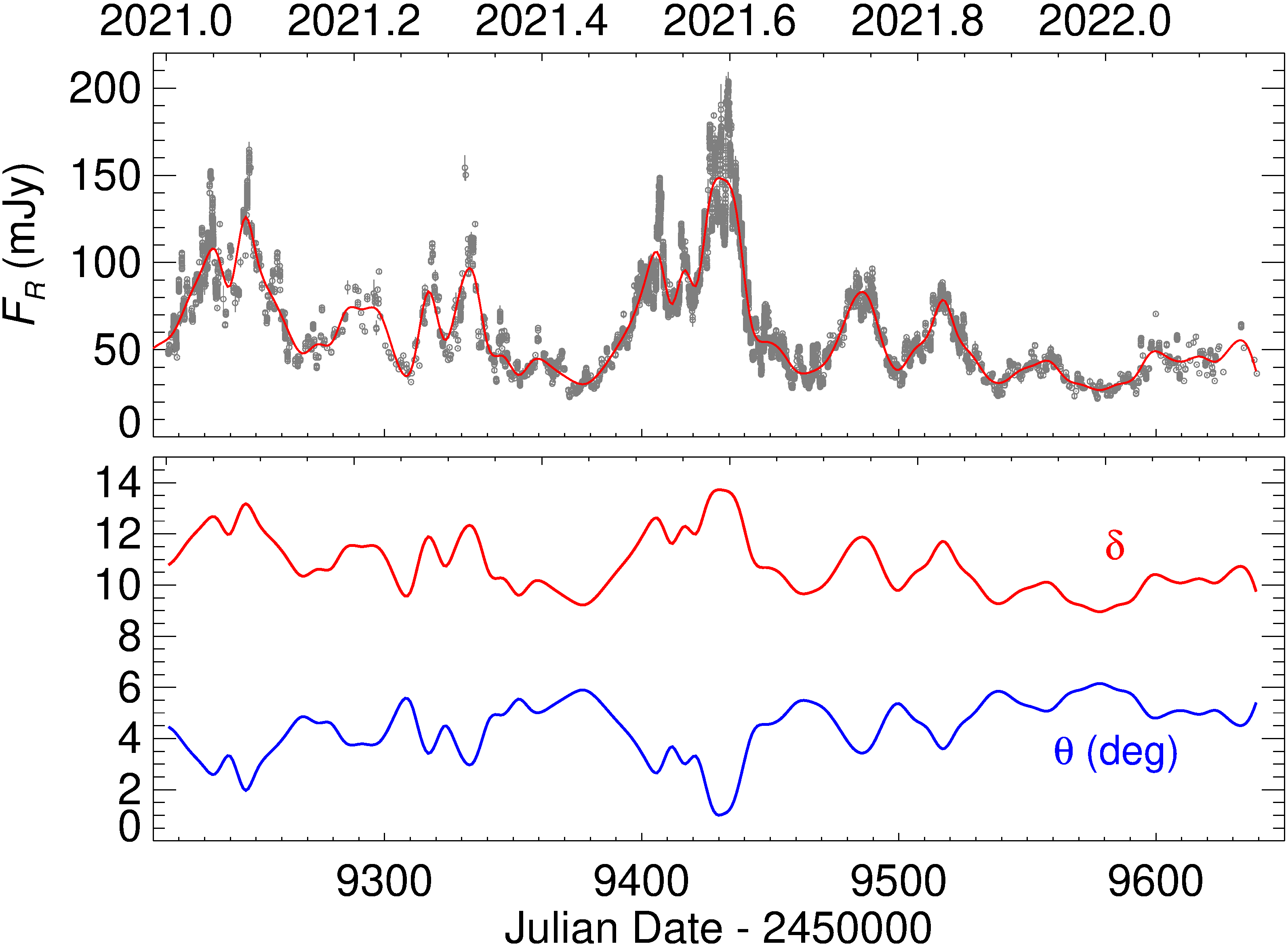by Claudia M. Raiteri
BL Lacertae belongs to the class of active galactic nuclei known as blazars, and is the prototype of one of their two subclasses, precisely that of the BL Lac type objects. The emission of these sources is dominated by non-thermal radiation emitted by a jet of plasma which is launched near the supermassive black hole at the center of the host galaxy, and which points towards us.
Because of the relativistic Doppler effect, this orientation causes the radiation we observe to be amplified with respect to that emitted, and to show intense variability.
In 2021 BL Lacertae went through a phase of great activity, reaching brightness levels never observed before.
Continuous monitoring by the international collaboration Whole Earth Blazar Telescope (WEBT), coordinated since 2000 by researchers from the INAF-Astrophysical Observatory of Turin, has made it possible to obtain an enormous amount of data from 41 telescopes distributed in longitude in the northern hemisphere.
Thanks to this intense observational effort, it was possible to confirm an interpretative model of the variability already proposed in the past by the Turin researchers (see in particular Blazar spectral variability as explained by a twisted inhomogeneous jet by Raiteri et al., 2017, Nature, 552, 374).
This predicts that the long-term variability is due to a geometric effect, caused by the change over time of the orientation of the jet region from which the radiation comes with respect to our line of sight.
When the angle of view decreases, the Doppler factor increases and the flux is amplified.
In contrast, the variability on short time scales would be due to physical processes inside the jet, such as shock waves, magnetic reconnection, turbulence.
The work on BL Lacertae has been published by MNRAS (see The optical behavior of BL Lacertae at its maximum brightness levels: a blend of geometry and energetics by Raiteri et al., MNRAS, 522, 102, 2023)

Top, the optical light curve of BL Lacertae analyzed in the article by Raiteri et al. 2023. Bottom, the trend in time of the Doppler factor 𝛿 and viewing angle 𝜃 of the emitting jet region according to the model proposed by the authors. Credits: Raiteri et al. 2023

